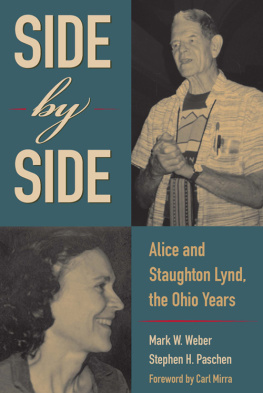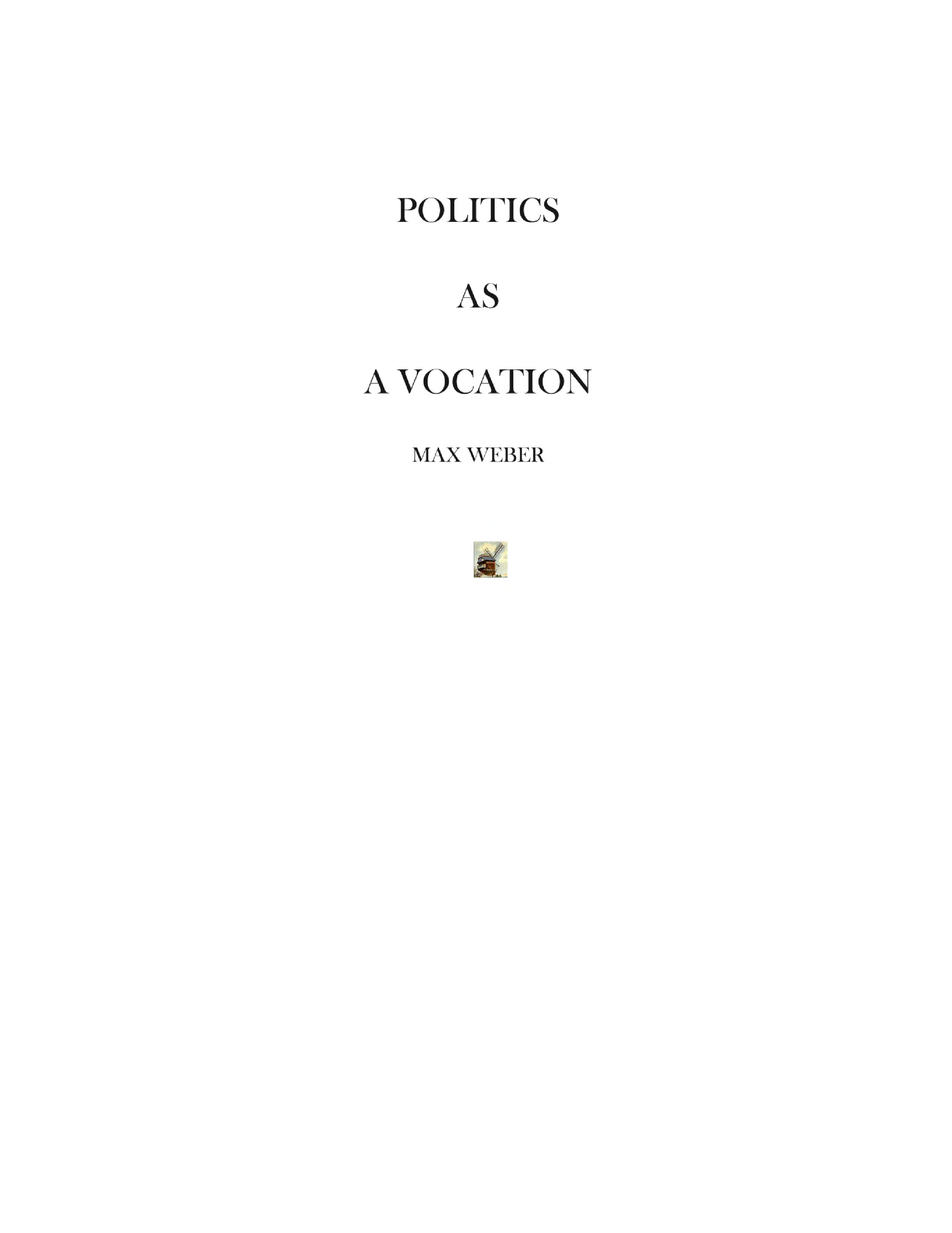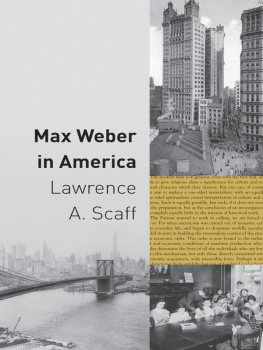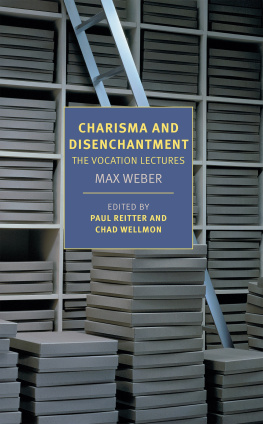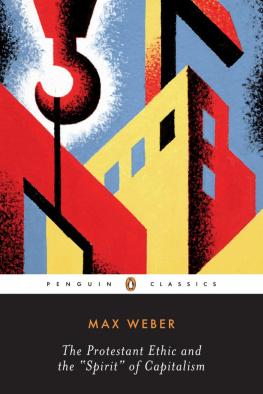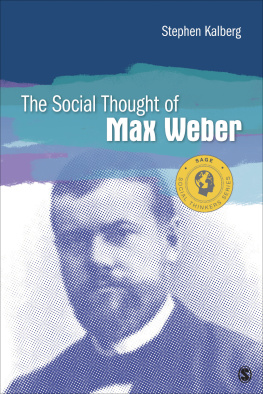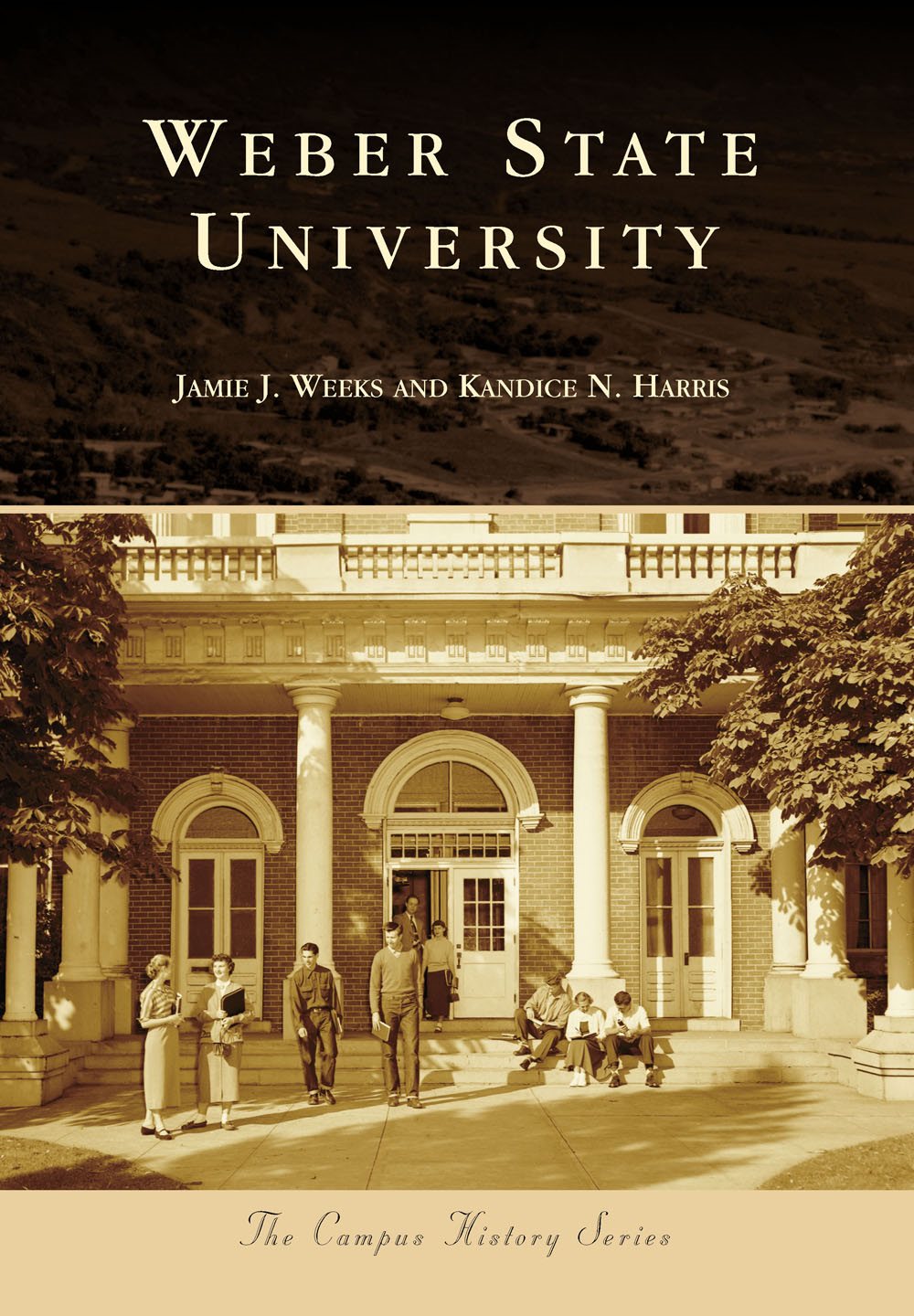
The Campus History Series
WEBER STATE
UNIVERSITY
ON THE COVER: Weber College students from 1951 enjoy the beautiful manicured grounds of the Jefferson campus as they leave the historic Louis Frederick Moench Building, which was constructed in 1892. (Courtesy of Weber State University Archives.)
COVER BACKGROUND: This 1970 aerial view of the Weber State College campus depicts the early development of what would become a university campus. Shown on the left, Buildings 1, 2, 3, and 4, as they were officially named, were the first four buildings constructed on the new campus and are no longer in existence. On the far right is the original Browning Center, with the then-new administration building (center), student center, library, and the Collett Art Building (no longer in existence). (Courtesy of Weber State University Archives.)
The Campus History Series
WEBER STATE
UNIVERSITY
JAMIE J. WEEKS AND KANDICE N. HARRIS

Copyright 2016 by Jamie J. Weeks and Kandice N. Harris
ISBN 978-1-4671-1680-0
Ebook ISBN 9781439657447
Published by Arcadia Publishing
Charleston, South Carolina
Library of Congress Control Number: 2015959224
For all general information, please contact Arcadia Publishing:
Telephone 843-853-2070
Fax 843-853-0044
E-mail
For customer service and orders:
Toll-Free 1-888-313-2665
Visit us on the Internet at www.arcadiapublishing.com
To Denny, for being so supportive, and to my awesome children and grandchildrenyoure the best!
Jamie Weeks
To Sam, for always being there.
Kandice Harris
CONTENTS
ACKNOWLEDGMENTS
This book was created to celebrate the 125th anniversary of Weber State University. We hope you enjoy the history and images. The authors would like to sincerely thank the following individuals for their support and cooperation throughout this project: Stephen Francis, associate professor of history, for his constant encouragement, and for providing suggestions and advice; Joan Hubbard, university librarian, for allowing us to take on this project and providing library support for us to move forward; Tia Taylor, a talented visual arts major who spent many, many hours helping prepare images for publication; Brian Simmons, staff, and students in the University Archives and Digital Collections for scanning images and covering the department as needed; Sarah and Melissa for advice and sympathy; the patience of Sarah Gottlieb, title manager, and the rest of the Arcadia staff for making this happen.
We would especially like to recognize all of the departments on the Weber State University campus that helped provide support and information: most especially University Marketing and Communications and its incredible staff, the Alumni Center for the staffs knowledge and support, Multimedia Services for providing information, and the student newspaper through timefrom the Acorn (19041916) to the Weber Herald (19171935) and finally the Signpost (19372014)for the massive amount of history, stories, and knowledge gleaned from this irreplaceable source.
Thanks go to the Utah Digital Newspaper project for the priceless amount of information its website provides. Last but not least, we would like to acknowledge those who have gone before us for keeping a record of the vision and oversight it took to create this wonderful institution: the early presidents and faculty members who took the time to write down the history of Weber as it developed; the 1889 Board of Education for its daily journals telling the story of the struggle and perseverance it took to hold on to Weber Academy; and the oral histories of early students, faculty, and staff that provided invaluable firsthand knowledge of Webers development, traditions, and student lifeyou were all our inspiration.
Unless otherwise noted, all images appear courtesy of the Weber State University Archives.
INTRODUCTION
In the late 1800s, the Church of Jesus Christ of Latter-day Saints (LDS) decided to develop church-sponsored educational academies. Chairman of the Board of Education Wilford Woodruff, a leader of the church, stated, We feel that the time has arrived when the proper education of our children should be taken in hand by us as a people, where the principles of our religion may form a part of the teachings of the schools. On September 19, 1888, Lewis W. Shurtliff, then president of the Weber Stake, worked within his jurisdiction to form an eight-member Board of Education. The academy was to start classes in January 1889. LDS bishop Robert McQuarrie offered the Second Ward Meetinghouse as the building for the new school, with a rental fee of $300 per year. McQuarrie put together a committee to purchase desks and school supplies (approximately $1,000), install fences and toilets, and send a letter to each bishop in the area requesting financial aid. On January 7, 1889, Weber Stake Academy opened its doors for the first time to approximately 100 students, with two instructors, Louis F. Moench and Edwin C. Cutler.
With an increase in enrollment the next term, the meetinghouse became overcrowded. It was proposed that the academy be moved to the Ogden Tabernacle. Within two weeks of classes starting in the tabernacle, the LDS Church First Presidency informed the school that it would need to close its doors immediately. An attorney hired by the church had advised that the tabernacle should not be used for anything but church services. This was in response to the US government threatening to seize and confiscate all church property because of the church practice of polygamy. The board decided to purchase land to build its own structure. The funds allotted were between $25,000 and $30,000. The school closed its doors for 18 months while construction was completed on the first building of the academys new home. On November 1, 1890, Charles F. Middleton, a member of the Board of Education, wrote in his journal:
At our meeting it was reported by the building committee that the building was up to the second floor and that they were very much in need of means. I moved the following resolution to-wit: That we do pledge ourselves, our words, our honor and our property to the building committee of the Weber Stake Academy in raising means by loan or otherwise to complete said building at the earliest possible date. It was unanimously adopted.
On January 8, 1891, Middleton wrote, I secured a loan of $1,100.00 of William Critchlow for the Stake Academy. This courageous act was taken by all members of the board as they mortgaged their homes and properties to provide financial aid and backing for the institution.
On November 23, 1891, two hundred students began attending classes in the newly completed Weber Stake Academy Building, later named the Louis F. Moench Building. In his diary on March 16, 1892, Middleton wrote, Signed a note and mortgage on the Stake Academy $10,000, these papers are to be signed by all the stake educational board together with their wives. Throughout the first 15 years, the academy continued to suffer many financial difficulties; however, this period was also a time for the academy to grow and develop with a new addition to the Moench Building, a steady increase in student enrollment, the development of new courses, and the expansion of a student Polysophical Society. In 1908, the school dropped a portion of its name to become Weber Academy. At this time, the Board of Education was reorganized and its name changed to the Board of Trustees, with David O. McKay as president. In 1912, preparatory classes were dropped and the curriculum focused on high school courses. As the community evolved, the need for upper division courses became apparent. The academy began to offer two years of college work to the curriculum, and in 1918, the school was renamed Weber Normal College.
Next page



